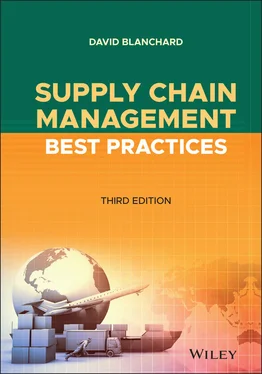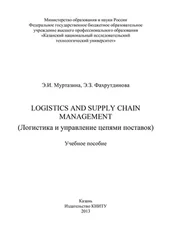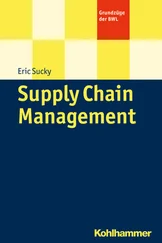What Makes a Supply Chain Leader?
Here's the good news: Whereas the Singhal/Hendricks study exposes the vulnerability of poorly managed supply chains, another study conducted by Accenture (in partnership with INSEAD and Stanford University) reveals that companies identified as supply chain leaders have a market cap up to 26 percentage points higher than the industry average. 6 That begs the question: So what makes a supply chain leader, anyway?
That's where the statistical approach comes in. If you can measure the performance of your supply chain, then you'll be able to determine how close you are to being best-in-class. But how do you know exactly who is the best at supply chain management? When Fortune magazine identifies the top-performing companies in a given industry, it uses the straightforward standard of annual sales. When it comes to identifying the top supply chains, though, merely counting up dollars and cents won't get the job done. After all, a supply chain that is truly best-in-class will encompass numerous operations and processes that don't necessarily show up on a profit-and-loss sheet, such as planning and forecasting, procurement, transportation and logistics, warehousing and distribution, customer service, and other key factors in the overall supply chain equation.
Since 2005, analyst firm Gartner has attempted to quantify the qualities that define “best-in-class” with its annual ranking of the top supply chains. Part of this list is based on a vote from a community of supply chain practitioners and experts, and like most popularity votes, nobody will ever agree with every choice. 7 However, the list also factors in three financial metrics that Gartner believes best indicate the overall effectiveness of a company's supply chain: three-year return on assets (net income/total assets), inventory turnover (cost of goods sold/quarterly average inventory), and three-year revenue growth. In 2016, Gartner introduced a corporate social responsibility (CSR) metric as well, based on third-party data. The analyst firm assigns a score to the popular vote as well as to the metrics, and then comes up with a composite score for all the companies (mostly manufacturers and retailers) under consideration.
In the previous edition of this book, we remarked on how inventory turns were the best indicator of a world-class supply chain, at least based on the rankings of the Top 25 Supply Chains of 2009. In that year, three high-tech giants led the way with the most inventory turns: Dell had 46.2, Apple was close behind with 45.5, and IBM had 20.0 turns. Not coincidentally, Apple and Dell also finished at the top in the overall rankings, with IBM finishing in fourth (consumer packaged goods manufacturer Procter & Gamble claimed the third spot).
However, a decade later, the rankings look quite a bit different. Dell and IBM didn't even make the list, while Apple and P&G were moved to a separate list of what Gartner calls “Supply Chain Masters,” i.e., companies so consistently proficient in their supply chain management that they tended to finish in the top five slots year after year after year (and thus, perhaps, made the list a bit too predictable). None of the companies in the Class of 2019 came anywhere close to Dell's 46.2 inventory turns. Chinese online retail giant Alibaba had the highest inventory turn mark among the Top 25 at 23.4 (Alibaba didn't even crack the Top 10, though, finishing at 13). The next-closest was Starbucks at 12.7 turns.
In 2019, the company at the top of the list was consumer packaged goods manufacturer Colgate-Palmolive, whose inventory turns were strictly average at 5.0, but whose return-on-assets score was one of the very best among the Top 25, at 19.9%. Illustrating how the supply chain metrics landscape has changed in just 10 short years, one of the key metrics propelling Colgate to the top spot was its perfect 10.0 CSR score, earned in part due to its “no deforestation” policy.
According to Gartner, following are the top 10 supply chains of 2019:
1 Colgate-Palmolive
2 Inditex
3 Nestlé
4 PepsiCo
5 Cisco Systems
6 Intel
7 HP
8 Johnson & Johnson
9 Starbucks
10 Nike 8
When it comes to measuring overall supply chain performance, companies typically focus on benchmarking metrics, such as those established in the Supply Chain Council's SCOR model, which we'll look at later in this chapter. Delivery performance, fill rates, perfect order fulfillment, cash-to-cash cycle time, inventory turns—these are some of the standards by which supply chains are judged, to determine whether they're best-in-class, fair-to-middling, or knocking on death's door. So let's take a look at how some top-performing companies are tracking their supply chains.
Automaker Hyundai, for instance, uses its parts distribution operation to build customer loyalty. The company's goal is to provide high levels of customer service while keeping its costs as low as possible. In this case, the customers are Hyundai dealers, and through dealer satisfaction surveys the company has learned that order fill rate is the number-one driver of satisfaction among its dealers.
So to ensure that it's keeping its customers happy while keeping its costs down, Hyundai measures the facing fill rate, which is the order fill rate from the warehouse assigned to the dealer. The higher the fill rate, the higher the level of dealer satisfaction. Concurrently, the company can reduce its transportation costs—the goal is to ship parts out of an assigned warehouse on a dedicated delivery schedule. If Hyundai needs to ship parts from another warehouse outside that delivery route, it most likely will need to use an expedited carrier, which is much more expensive.
Hyundai's facing fill rate on orders is about 96%, which is considered good for the automotive industry. The automaker also measures the fill rate for its entire warehouse network, which is 98%, also a high score for automakers. But the company wants to get that fill rate even higher, to reduce its use of premium transportation.
Transportation costs, however, are just part of the total supply chain cost, which also includes inventory and productivity costs. Hyundai monitors the amount of inventory it carries at any given time, with the understanding that best-in-class for the automotive industry won't necessarily equate to another industry's goals, such as the high-tech industry. Automakers carry a deep inventory of parts because their vehicles are designed to last for years. Computer makers, on the other hand, have comparatively small inventories of parts since high-tech products are often considered obsolete after just a few months.
To stay on top of current automotive industry trends, Hyundai belongs to an independent automotive and heavy equipment group that collects performance and cost metrics from member companies and provides benchmarking services. 9
Everybody's Talking About Benchmarking
Hyundai has recognized two crucial facts that many companies unfortunately tend to gloss over when they try to evaluate their supply chain performance: (1) It's important to benchmark your supply chain against your peers to get a real-world evaluation of how good (or bad) you're doing, and (2) it's just as important that you recognize the limitations of a benchmark.
The biggest danger in benchmarking is assuming too much from any single study. Many benchmarking studies encompass companies and organizations of all shapes and sizes. Typically, if a company is better than the average, it declares victory and moves on. And if it's worse than the average, the usual rationalization is that it's being benchmarked against other industries, so it's not going to do as well in comparison. In short, the metrics end up being dismissed as irrelevant. This happens more often than you might think because while a lot of attention has been given to the idea of benchmarking, there's not much evidence that many companies are actually doing it.
Читать дальше












